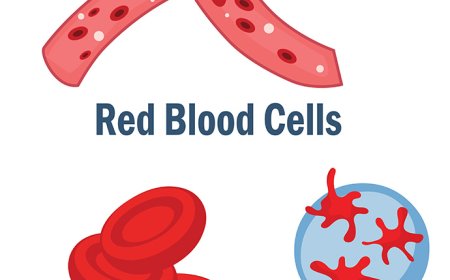Respiratory System for Kids – What It Is and Why It Matters
Learn about the respiratory system for kids. Discover how your lungs, windpipe, and diaphragm work together to breathe in oxygen and send carbon dioxide out—keeping your body alive and healthy.
🫁 The Respiratory System: What It Is and Why It Matters
Have you ever stopped to think about what happens every time you take a breath? In that moment, your body is doing something amazing—bringing in oxygen from the air and getting rid of waste gases like carbon dioxide. This process is called respiration, and it’s possible because of your respiratory system.
The respiratory system is the group of organs that help you breathe. It includes your nose, mouth, trachea, lungs, and diaphragm. Together, these parts form a system that brings in fresh air, moves it through the body, and removes waste gases your body doesn’t need.
Oxygen is the fuel your body needs to work. Every cell in your body—from your brain to your toes—uses oxygen to produce energy. Without oxygen, your organs and tissues wouldn’t survive. That’s why the respiratory system is one of the most important systems in your body—it keeps you alive by delivering oxygen and removing carbon dioxide, all without you even having to think about it!
🌬️ What Happens When You Breathe?
When you inhale, or breathe in, air enters your body through your nose or mouth. It then travels down your trachea, a long tube also called the windpipe. The trachea splits into two smaller tubes called bronchi, one going to each lung.
Inside the lungs, the bronchi divide into even smaller tubes called bronchioles, which lead to tiny balloon-like air sacs called alveoli. This is where the magic happens. Oxygen passes through the walls of the alveoli and into the blood. At the same time, carbon dioxide moves out of the blood and into the alveoli to be exhaled.
When you breathe out, or exhale, your body is pushing carbon dioxide out of your lungs and back into the air. This keeps your blood clean and balanced, and your body running smoothly.
💨 Why Is Breathing So Important?
Breathing keeps your blood full of oxygen, which is used to make energy. Your brain, muscles, and organs all rely on this oxygen to function. If you stop breathing for even a few minutes, your body starts to shut down.
Breathing also helps control your temperature, blood pressure, and pH level (how acidic your blood is). In fact, breathing plays a big role in keeping your entire body in homeostasis—a state of balance that your body works hard to maintain.
🧠 You Don’t Have to Think About Breathing—But You Can!
Breathing is controlled by the brainstem, which sends messages to your diaphragm (a muscle under your lungs) to contract and relax. This causes air to move in and out without you having to think about it. This kind of breathing is automatic.
But breathing is also one of the only body functions you can control when you want to. You can take deep breaths to calm down, hold your breath underwater, or blow up a balloon. This makes breathing special—it works both automatically and voluntarily.
🏃♂️ Breathing Changes With Activity
When you’re running, biking, or playing sports, your muscles use more oxygen. That’s why you start breathing faster—your lungs are trying to pull in more oxygen and get rid of more carbon dioxide.
When you rest, your breathing slows down because your body doesn’t need as much energy. Your respiratory system is smart—it knows exactly how much oxygen you need and adjusts your breathing to match.
🎉 Fun Facts About the Respiratory System
- You take about 20,000 breaths every day
- Your lungs can hold up to 6 liters of air—about three large soda bottles!
- Your left lung is smaller than your right lung to make room for your heart
- Alveoli in your lungs are so small, but you have over 300 million of them
- The total surface area of your lungs is about the size of a tennis court
🧠 Vocabulary
- Respiration – The process of breathing and gas exchange
- Oxygen – A gas your body needs to produce energy
- Carbon dioxide – A waste gas your body gets rid of when you exhale
- Trachea – The windpipe; air tube that connects your throat to your lungs
- Bronchi – Two tubes that branch from the trachea into the lungs
- Bronchioles – Smaller tubes inside the lungs
- Alveoli – Tiny air sacs where oxygen and carbon dioxide are exchanged
- Diaphragm – The muscle under the lungs that helps you breathe
- Inhale – To breathe in
- Exhale – To breathe out
✅ Interactive Quiz: Test Your Breathing Smarts!
1. What is the main job of the respiratory system?
A. Move food through the body
B. Help you breathe and exchange gases
C. Pump blood to the muscles
D. Store vitamins
2. What gas do you bring into your body when you breathe?
A. Carbon dioxide
B. Oxygen
C. Nitrogen
D. Hydrogen
3. What part of the body controls breathing automatically?
A. Heart
B. Brainstem
C. Lungs
D. Nose
4. What tiny air sacs in the lungs allow gas exchange?
A. Bronchi
B. Alveoli
C. Capillaries
D. Ventricles
5. What happens when you exhale?
A. Oxygen enters the body
B. Blood is pumped
C. Carbon dioxide leaves the body
D. Air stays in the lungs
🧒 Kid-Friendly Summary
Your respiratory system helps you breathe in oxygen and breathe out carbon dioxide. Your lungs, nose, and trachea all work together to keep your body full of fresh air. Breathing happens without thinking, but it’s one of the most important things your body does!


















































